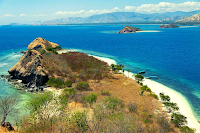Ende's Animism

According to local oral tradition, the Ende tribe were the first people in the Ende Lio region to descend from the highest mountain, Mount Lepembusu, which is located in the Wolotolo village residential area. According to folklore, their ancestors came from outside, namely by sea with rafts from the west, east, and north. The first ancestor of the Ende people was Nggae Sawu, who came from across and landed in Manado Sawu. Th Verhoever found human skeletons in the Momer & Bua burrows. The first excavation was carried out in July 1965. In 1701, for the first time in Kupang, an elementary school & Christian congregation were established by a traveling pastor. Belief in ancestors is a belief that developed in prehistoric times, this animism belief is a belief that still applies in the Ende Lio region, in this belief system, ceremonies for worshiping ancestral spirits are still the most important place in traditional ceremonies, they believe that people who have died have a huge rol...
















